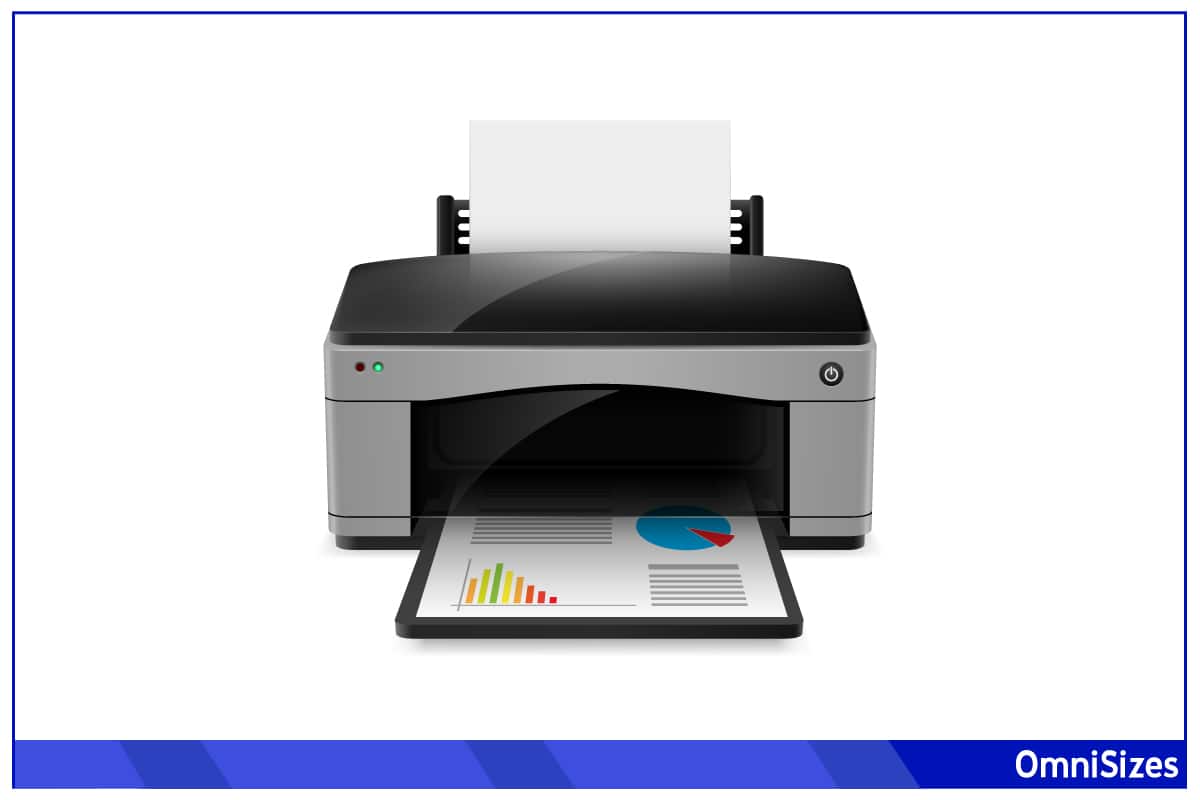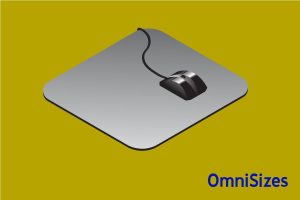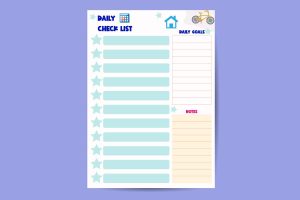Printers are an integral part in our personal and professional lives. We need them to print cherished photos, as well as important business and legal documents. Printer sizes is an important aspect in choosing the right printer since it has a direct effect on whether it meets your needs.
Common home printers typically range in size from 16 × 14 × 7 inches to 18 × 25 inches × 16 inches. Office printers are larger, often between 14 × 17 × 8 inches and 24 × 36 inches × 16 inches. These printers usually work with standard paper sizes like Letter, Legal, and A4.
However, there are several more printer types to discuss. This guide will cover all sorts of printers and common dimensions, as well as paper size compatibility.
Types of Printers
There are countless types of printers that offer a wide range of capabilities. Let’s take a closer look at the most common home and office printer types.
1. Inkjet Printers
Inkjet printers are widely used due to their versatility. They work by spraying tiny droplets of ink onto paper, creating high-quality prints ideal for both text and images. They’re perfect for home use, especially for printing photos and documents with color graphics.
2. Laser Printers
Laser printers are known for their speed and efficiency. They use a laser beam to transfer toner onto paper, producing sharp text and graphics. Ideal for office environments, these printers excel in handling large volumes of printing quickly. They’re more cost-effective in the long run for users who print frequently.
3. All-in-One Printers
All-in-one printers combine printing, scanning, copying, and sometimes faxing into a single device. These multifunctional printers are a space-saving solution, ideal for both home and small office settings where versatility is key. They come in both inkjet and laser variants.
4. Color Printers
While most inkjet and laser printers now offer color printing, dedicated color printers are designed specifically for producing vibrant, high-quality color prints. They’re suitable for printing everything from detailed graphs and presentations to colorful brochures and marketing materials. These printers often have advanced color management features.
5. Monochrome Printers
Monochrome printers, often laser printers, are designed for printing in black and white. They are ideal for offices that primarily print text documents, as they offer faster printing speeds and lower cost per page than color printers.
6. Portable Printers
For those who need to print on the go, portable printers offer a compact and mobile solution. They are small enough to carry in a bag and can operate on battery power. These printers are ideal for traveling professionals, event planners, and anyone needing to print outside of a traditional office setting.
Printer Sizes
While a printer’s capabilities are the most important aspects to consider, its size determines whether or not you have room for it.
1. Compact Printers
Compact printers are small, space-saving devices ideal for personal or home office use. They typically measure around 9 × 12 × 5 inches to 14 × 13 × 8 inches. They are suitable for users with limited space who need to print documents, small photos, and other day-to-day printing tasks.
2. Personal Printers
Personal printers are designed for individual use. These printers typically range in size from 16 × 14 × 7 inches to 18 × 25 × 16 inches. This size range ensures they are compact enough to fit comfortably on a desk or in a small home office space without taking up too much room. Personal printers are ideal for users who need a reliable printing solution but don’t require the high-volume output or advanced features.
3. Standard Office Printers
Standard office printers are larger, designed to cater to the higher volume printing needs of a business environment. They usually range from 14 × 17 × 8 inches to 24 × 36 × 16 inches. They often include additional features like duplex printing and larger paper trays to accommodate the increased workload.
Compatible Printing Paper Sizes
Not all printers are designed to print on the same sheet size. The following describes common and not-so-common printing sizes that are compatible with most printer types.
1. Standard Paper Sizes
Standard paper sizes are the most commonly used in both home and office printers. The most familiar sizes include:
- Letter (8.5 × 11 inches): The default size for most documents in North America.
- Legal (8.5 × 14 inches): Used for legal documents, offering more length than Letter size.
- A4 (8.3 × 11.7 inches): The standard size for most countries outside North America, used for documents, letters, and forms.
- A5 (5.8 × 8.3 inches): Half the size of A4, often used for flyers, leaflets, and smaller booklets.
These sizes are widely supported by most printers, from compact personal printers to larger office models.
2. Photo Paper Sizes
Photo paper sizes vary and are designed to suit different printing needs and preferences. Common sizes include:
- 4 × 6 inches: The standard size for personal photo prints, compatible with most home photo printers.
- 5 × 7 inches: A slightly larger option for higher-quality photo prints.
- 8 × 10 inches: Often used for professional photography prints or larger personal photos.
- A6 (4.3 × 5.8 inches): A popular size for postcard prints or small photo albums.
Photo printers, especially those designed for high-quality image printing, typically support a range of these sizes.
3. Envelope Sizes
Printers often have the capability to print on various envelope sizes for letters, invitations, and other mailings. Common envelope sizes include:
- #10 (4.125 × 9.5 inches): Standard business envelope size, suitable for a folded Letter-size document.
- C4 (9.01 × 12.75 inches): Large enough to hold an unfolded A4 document, commonly used in business settings.
- DL (4.313 × 8.625 inches): A common size for letters and promotional mailings, fitting an A4 sheet folded into thirds.
Many all-in-one and office printers have settings specifically for printing on envelopes, accommodating these sizes.
4. Specialty Paper Sizes
For specific tasks or industries, specialty paper sizes are used. Some of these include:
- Tabloid (11 × 17 inches): Used for larger documents like newspapers, small posters, and architectural plans.
- A3 (11.7 × 16.5 inches): Double the size of A4, used for presentations, large tables, and diagrams.
- B sizes: Including B5 (6.9 × 9.8 inches) and B4 (9.8 × 13.9 inches), these are often used in books, magazines, and art prints.
Wide-format and professional printers are typically equipped to handle these larger and specialized paper sizes.


